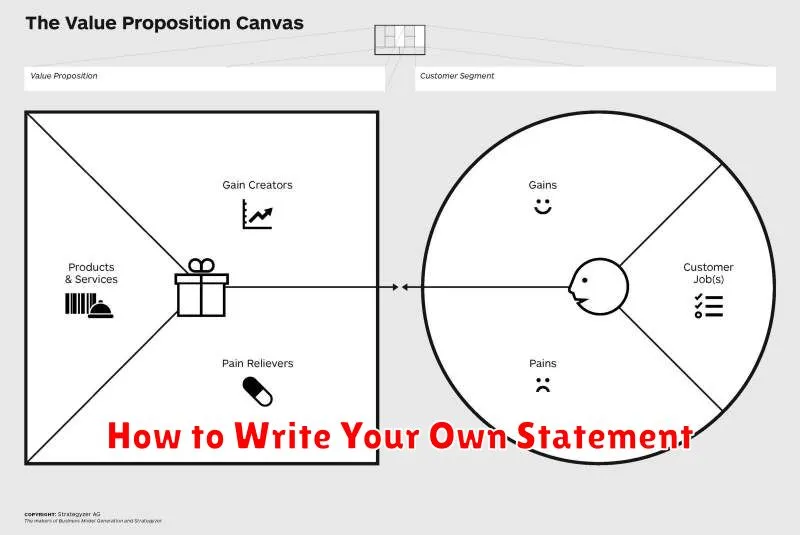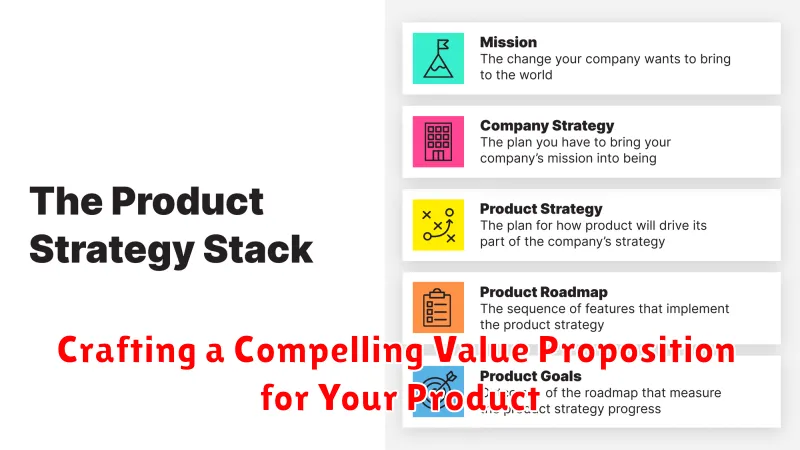In today’s competitive market, a compelling value proposition is crucial for any product seeking to capture attention and drive sales. It is the core message that communicates the unique benefits your product offers, differentiating it from the competition and resonating with your target audience. Crafting a strong value proposition requires a deep understanding of your customers’ needs, the competitive landscape, and the distinctive advantages of your product. This is not merely a marketing tagline; it’s the foundation upon which your entire marketing and sales strategy is built. A well-defined value proposition provides clarity, guides messaging, and ultimately persuades potential customers why your product is the best choice.
This article will guide you through the process of developing a compelling value proposition for your product. We will explore the key elements of an effective value proposition, including identifying your target audience, understanding their needs and pain points, and articulating the unique value your product delivers. We will also delve into strategies for communicating your value proposition clearly and concisely, ensuring it resonates with your potential customers and motivates them to choose your product. By mastering the art of crafting a compelling value proposition, you will position your product for success and gain a significant competitive edge.
What Makes a Value Proposition Strong?
A strong value proposition effectively communicates the unique value your product offers to customers. It clearly articulates how your product solves their problem or fulfills their need better than the competition.
Key elements of a strong value proposition include clarity, specificity, and measurability. It should be easy for potential customers to understand the benefits they’ll receive. Vague statements and generic promises weaken the impact.
Focus on the tangible benefits your product delivers. Instead of simply stating features, explain how those features translate into value for the customer. Quantifying the benefits with data or specific examples further strengthens the proposition.
Real-World Examples and Why They Work
Examining successful value propositions provides valuable insight for crafting your own. Apple, for example, positions its products not just as devices, but as tools for creativity and self-expression. This resonates with consumers seeking more than mere functionality.
Tesla doesn’t simply sell electric vehicles. They offer a vision of a sustainable future, appealing to environmentally conscious buyers. This focus on a larger purpose elevates their value proposition beyond the product itself.
Consider Dollar Shave Club. Their subscription service offers convenience and affordability, directly addressing customer pain points associated with traditional razor purchasing. This clear, concise value proposition fueled their rapid growth.
How to Write Your Own Statement

Creating a compelling value proposition statement requires careful consideration and precise language. Begin by clearly identifying your target audience. Who are you trying to reach?
Next, pinpoint the key benefit your product offers this specific audience. What problem does it solve or what need does it fulfill? Focus on the most significant advantage.
Finally, articulate your unique selling proposition (USP). What differentiates your product from the competition? This is crucial for standing out in a crowded market.
Testing and Refining Your Message

Once you’ve crafted your value proposition, rigorous testing is crucial. This involves presenting your message to your target audience and gathering feedback. Don’t rely on internal opinions alone. Direct customer interaction is essential.
Methods for testing include surveys, A/B testing on landing pages, and focus groups. Pay close attention to how your audience reacts. Do they understand your message? Does it resonate with their needs and pain points? Analyze the data collected and identify areas for improvement.
Refining your value proposition is an iterative process. Be prepared to adjust your messaging based on the feedback received. This continuous improvement ensures your value proposition remains relevant and effective in a dynamic market.
Common Pitfalls to Avoid
When crafting your value proposition, be mindful of these common mistakes:
Lack of Clarity
Avoid generic statements. Clearly articulate the specific benefits your product offers and how it solves a customer’s problem. Vagueness leads to confusion and disinterest.
Focusing on Features, Not Benefits
Customers care about what your product does for them, not its technical specifications. Highlight the positive outcomes and value derived from using your product.
Ignoring the Competition
Differentiate yourself. Explain what makes your product unique and superior to alternatives. Why should a customer choose you?

